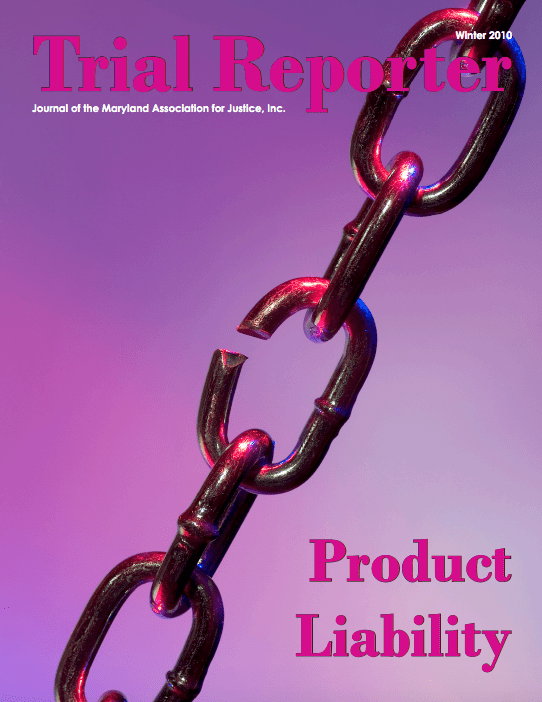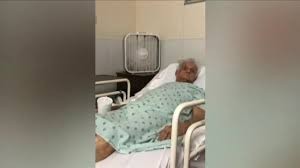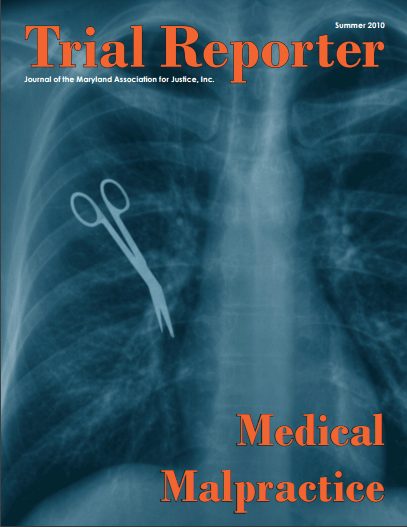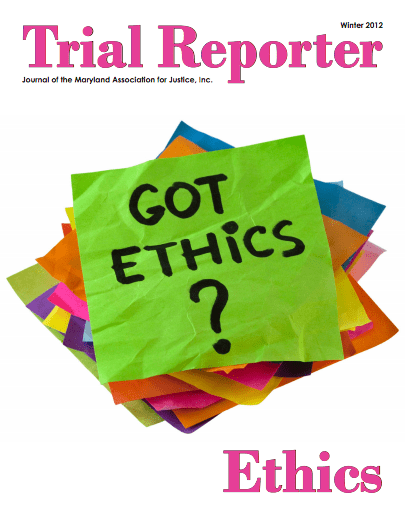
TWOMBLY & IQBAL – The New Federal Pleading Standard Plaintiffs’ Attorneys Must Stop and Take Notice Of
The litigation blogs have all been abuzz as the news has spread, and cases have been dismissed in the wake of the United States Supreme Court’s decision in Ashcroft v Iqbal, 129 S.Ct. 1937 (2009). In this landmark case the court held that Iqbal, a Muslim Pakistani immigrant who was arrested and detained under highly restrictive circumstances as the result of a 9/11 investigation, could not sue two Bush administration officials for what he recounted was the terrible abuse he suffered. The abuse alleged by Iqbal included five months of solitary confinement while shackled at his arms and legs, strip searches, ongoing physical and verbal abuse, and denial of medical care. The basis for the dismissal: insufficient factual evidence supporting the allegations in the Plaintiff’s complaint. While socio-political activists relay their outrage in response to this denial of accountability and violations of the constitution, civil litigation attorneys are weighing their options in response to the practical fallout from this case.
The day to day reality of Iqbal is that the Supreme Court has taken the stricter pleading standard it asserted in Bell Atlantic v Twombly, 550 U.S. 544 (2007) (an antitrust case decided while Iqbal was on appeal) and used Iqbal to apply it to all civil cases which have been and will be filed in Federal Court. However, the Court failed to provide a user-friendly barometer for determining how to meet this new standard, and it neglected to provide a concrete method for its consistent application. These vagaries leave Plaintiffs’ attorneys with multiple crucial questions: What is required by this new stricter pleading standard and how do we meet it? How do we do so prior to the provision of a single piece of discovery? And what happens if a new or already filed claim falls short of this newly elaborated standard? The following will hopefully serve as both a guide and a warning to Plaintiffs’ attorneys. We must carefully draft and review our Federal complaints to ensure that we do not fall victim to the dismissal of our client’s claims due to a mere technicality.
Conley to Twombly to Iqbal – The Modern Evolution of the Federal Pleading
Requirement and Its Application Throughout Federal Civil Litigation
In 1957 the Supreme Court held in Conley v Gibson that a Federal complaint was sufficient and should not be dismissed unless “it appears beyond doubt that the plaintiff can prove no set of facts in support of his claims which would entitle him to relief.” Conley v Gibson , 355 U.S. 41 at 45-46 (1957). This was the reasonable and accepted notice-pleading standard which Plaintiffs had been held to in Federal court for forty years. However, in 2007 the Supreme Court replaced this standard of possibility with one of plausibility. In Twombly the Supreme Court held that “While a complaint attacked by a Rule 12(b)(6) motion to dismiss does not need detailed factual allegations, a plaintiff’s obligation to provide the “grounds” of his “entitlement to relief” requires more than labels and conclusions, and a formulaic recitation of the elements of a cause of action will not do. Factual allegations must be enough to raise a right to relief above the speculative level. The pleading must contain something more than a statement of facts that merely creates a suspicion of a legally cognizable right of action, on the assumption that all the allegations in the complaint are true (even if doubtful in fact.)” Bell Atlantic v Twombly, 550 U.S. at 555. In short, a Plaintiff must allege “enough facts to state a claim to relief that is plausible on its face.” Id at 570.
After the decision in Twombly was handed down, there was an ongoing debate within the legal community as to whether this heightened standard would be limited to antitrust cases. From 2007 to 2009 the courts generally assumed a more restricted application. However, all cause for question was halted when the Supreme Court handed down its decision in Iqbal, making it unequivocally clear that the reach of this standard of plausibility had spread beyond the narrow scope of antitrust cases and been extended to all civil cases which had been, or would ever be, filed in a Federal court.
The majority opinion in Iqbal set forth a two pronged test for determining the sufficiency of factual evidence in a complaint. When determining whether or not to grant a Defendant’s 12(b)(6) motion, a court must first identify those assertions in the complaint which are factual as opposed to those which are merely conclusory in nature. Once these facts have been identified, the court must then evaluate the factual assertions in order to determine whether they are sufficient to form the basis of a claim for relief. Id at 1949-1950. If the factual assertions are found to be insufficient, the claim is dismissed without prejudice. If the statute of limitations has run, then the Plaintiff’s claim may be barred.
While many of us in the legal profession at times revel in multi-pronged tests, tests which often provide us with a sense of guidance and security when filing our claims, this one cannot be said to possess such qualities. Distinguishing between factual evidence and mere conclusions is a difficult subjective assessment for which the Iqbal court provides little guidance. For instance, the Plaintiff in Iqbal had listed numerous occurrences in his complaint as to what abuses he had allegedly endured and where and when he had endured each offense. However, the Court rejected these factual accounts as substantive evidence due to its assertion that there were other “obvious” explanations for these abuses. As such, the factual evidence listed in the complaint was deemed insufficient. Beyond just recounting the abuse itself, the Court asserted that Mr. Iqbal needed to provide factual support that demonstrated the complicity of the offending officers.
It is easy to see how this sort of requirement can quickly stifle a Plaintiff. This decision now requires Plaintiffs not only to present detailed, often unavailable, factual evidence of a wrongdoing, but furthermore (when warranted) we must produce factual evidence demonstrating the frame of mind of the wrongdoer. And to further complicate matters, all of this must be done prior to the exchange of a single piece of discovery. It appears that while the Plaintiff’s responsibilities in the litigation process have become increasingly burdensome, those of the Defendant have lightened to the point where the mere recognition of an obligation, or restriction, has become a task unto itself.
Proponents of the Iqbal decision have argued that this case merely clarifies, and only slightly heightens, the requirements of the pre-existing standard. These proponents have alleged that the jump from a standard of possibility to plausibility is not so great as to inhibit meritorious claims. However, the reality is that Defense attorneys throughout the country are filing countless motions to dismiss in Federal cases by alleging insufficiency of factual evidence in complaints. Remarkably, a search of Lexis shows that within the past six months, Iqbal has been cited 3,146 times. This is not to infer that all of the motions to dismiss by Defense counsel have been or will be successful, but it does demonstrate that this decision has provided the Defense with a new type of ammunition that they have not hesitated to use. We must be equally diligent in educating ourselves and fortifying our claims so that they are deemed by the courts as trial worthy and not unsubstantiated refuse to be casually dismissed.
In What Types of Cases Will We Most Likely Run Into This Issue?
As Plaintiffs’ attorneys there are four types of claims where we can anticipate the emergence of this pleading issue: 1.Medical Malpractice Claims, 2. Product Liability Claims, 3. Loss of Consortium Claims, and 4. Claims for Wrongful Termination Under the False Claims Act. For those who regularly litigate in Federal Court, you are probably already well versed in the application of this new pleading standard. However, for those of you who have not faced a 12(b)(6) motion since May of 2009, or for those just beginning to engage in more regular appearances in the Federal system, the following will provide you with a fundamental understanding of what you can expect to see and a few basic strategies to combat these attacks and preserve your client’s claims.
A. Medical Malpractice Claims
Medical malpractice claims tend to be state claims and therefore, heard in state courts. However, as we know, there are occasions where we end up in federal court (usually due to diversity jurisdiction.) Because we tend to think of these claims as substantively state law driven, we tend to forget that the Federal Rules of Civil Procedure are still applied. As such, we can now expect a pleading standard beyond that of just “notice” in our medical malpractice claims that end up in federal courts.
The most foreseeable danger that we will encounter in these federally filed medical malpractice claims will be dismissal due to our bad-habit use of template complaints. While this may suffice in state court, this will surely result in the dismissal of the claim when filed in the corresponding federal jurisdiction. Specific factual details supporting each element of the medical malpractice claim are now mandated to survive a 12(b)(6) motion. Gone are the days of filing while waiting for records, or picking and choosing what we reveal to the Defendant during various points of
discovery. If we want to survive in Federal court, all of our cards must be on the table.
One of the severe shortcomings of this new pleading standard is that alleging intentional torts will become increasingly difficult due to the inaccessibility of information prior to discovery. One piece of good news is that in cases where we obtain sufficient facts during discovery which reveal evidence of intentional torts, we may still be permitted to amend the complaint prior to trial. The U.S. District Court for the District of Maryland permitted the amending of a complaint in order to add a count for punitive damages due to information that was revealed during the course of a Defense witness’ deposition. Reed v. River Rd. Surgical Ctr., LLC, 2009 U.S. Dist. LEXIS 71962 The Court ruled in favor of the Plaintiff in response to the Defendant’s 12(b)(6) motion and stated that “the Plaintiffs have alleged sufficient facts to demonstrate Dr. Shutz was warned that training was necessary on how to use the defibrillator, but failed to take action. The complaint alleges that the cardiac defibrillator is critical medical equipment.
These allegations are sufficient to state a claim for punitive damages.” Id at 9. It appears that if the Plaintiff: 1. makes an immediate request to amend the complaint once the information has been revealed, 2. provides a detailed explanation of the substance and source of the new information, and 3. demonstrates that there is no way this information was previously available, the court may be inclined to permit this addition.
B. Product Liability Claims
Iqbal poses perhaps the greatest threat to product liability litigation because this is an area which heavily depends on the procurement of information during the discovery process. Cases which fall within the category of product liability have no hope of access to documentation of knowledge, intent, or negligence prior to discovery. Given this reality it is difficult to surmise how we as Plaintiffs’ attorneys can overcome such an obstacle and still meet our burden as set forth by the Supreme Court. Negligent Product liability suits will become more difficult to prosecute, while intentional product liability suits will become nearly impossible to pursue. Claims which have their origin in public safety are threatened by this ruling which seeks to give added protection to those undeserving of yet another advantage.
A friend, who happens to be a product liability defense attorney, informed me that he has filed over 100 12(b)(6) motions in just the past two months. He relayed to me that he has seen numerous complaints where Plaintiffs rely on conclusory allegations regarding defective designs, defective manufacturing, and breaches in warranty. Plaintiffs assert that a product is unreasonably dangerous, and therefore caused the injury, without any accompanying facts which could possibly hope to support these complex claims. His words of wisdom, which I will gladly pass on to all of you, is that it would be wise for us to begin reciting facts not just in the beginning of the complaint, but also accompanying each of the counts. Along with this additional recitation, he recommended that Plaintiffs begin referencing other comparable safe products in their complaint, thereby distinguishing the offending product as defective. This will help clarify our claims and reinforce them to the full extent of their immediate voracity.
C. Loss of Consortium Claims
A derivative claim for loss of consortium can accompany either a medical malpractice or product liability suit in Federal court. This derivative claim for a marital injury is rooted in a separate claim for injury caused by the tortious act of a third party to a spouse. Deems v. Western Maryland Railway Company, 247 Md. 95, 100, 231 A.2d 514 (1967). There are two ways which a Defendant can attack the validity of a consortium claim due to insufficient pleading. The first is by attacking the primary tort claim as insufficient, and the second is by attacking the evidentiary support of the loss of consortium claim itself.
Because of the claim’s derivative nature, the complaint must contain sufficient allegations of the primary wrongdoing, of causation, and that both, in turn, led to the marital loss. The Federal Courts have held that if a Defendant attacks the sufficiency of the primary claim(s) under Iqbal and succeeds, the loss of consortium claim will also fail. Conversely, should the primary claim(s) be deemed sufficient by the court, the consortium claim will remain, absent the Defendant’s assertion of an independent defect. Carrigan v. K2M, Inc., 2009 U.S. Dist. LEXIS 99225. If the Defendant remembers to attack the sufficiency of the consortium claim, we can anticipate two types of criticisms: 1. insufficient facts pertaining to the consortium injury; and 2. insufficient facts linking the marital injury to the alleged wrongful conduct in the primary count. Therefore, we must alert the court to both the lack of validity of the Defendant’s assertions pertaining to factual insufficiencies, and, when warranted, the Defendant’s failure to make specific criticisms pertaining to the separate consortium claim.
D. Claims For Wrongful Termination Under the False Claims Act
Another scenario where we can anticipate encountering this type of motion is in a wrongful termination claim as it pertains to the Federal False Claims Act (FCA). In these types of claims, we represent clients who have been wrongfully terminated, allegedly due to retaliation as it relates to an employer’s fraudulent activities involving the Government. The courts have held that while these types of cases involve the FCA, Federal Rule 8 (and not the stricter Rule 9 pleading standard for allegations of fraud) applies because the allegations of fraud are secondary to the wrongful termination claim. United States ex rel. Elms v. Accenture LLP, 2009 U.S. App. LEXIS 16291 In this type of FCA retaliation claim (as opposed to a violation claim) the Plaintiff need only show that there were suspicions of fraudulent activity, and that said suspicions led to his/her early termination Ante v. Office Depot Bus. Servs., 2009 U.S. Dist. LEXIS 57054 Therefore, when the court evaluates the sufficiency of these complaints, the newly delineated standard for Federal Rule 8 is applied.
In Ante v Office Depot, the Plaintiff alleged that he was fired because he refused to comply with his superior’s request to alter financially related business information in preparation for a city audit. The Defendant moved for dismissal based on the fact that the Plaintiff failed to allege sufficient facts as dictated by Iqbal. The Court held that because the Plaintiff listed the “who, what, when and where” of the injuries, his burden had been met. The Court further elaborated that the Defendant’s reference to Iqbal did not impact its decision in favor of the Plaintiff because Iqbal “does not impose a “probability requirement,” and the opposition has not demonstrated how the facts in this case are implausible, defendant’s own argument has not crossed that line.” Id at 18. It behooves us as litigators to remind the court who bears the burden of demonstrating implausibility, and that (despite the Defendant’s contrary contentions); Iqbal has not raised the burden to a level of probability.
The Impact of Iqbal: Beyond Its Literal Translation & Its Place In Our Future
Cases such as Iqbal impact the technical course of litigation, but they also impact the mindset of future jurors: jurors who are now inundated with a 24 hour news cycle devoted to the discussion of the fabled “frivolous” lawsuit. The irony is that decisions like this one have sought to prevent or deter this boogieman and have only succeeded in making the acquisition of justice that much more difficult. Thus, jurors come armed with the pre-conceived notion that the wrongfully injured are the “at-fault” party. Despite the well-publicized attempts of generously paid Defense lobbyists, the fact remains that tort litigation is one of the last lines of defense against greedy and/or careless Defendants who put profit above the safety and well-being of the consumer. Mere propaganda does not eliminate this intent: it only serves to mask it.
We work in a state where strict non-economic damage caps are employed under the political guise of lowering physician malpractice premiums and medical costs. Decisions such as Waltzer enact expert report requirements with dispositive ramifications for Plaintiffs while failing to enumerate any consequences for Defendant’s similar omissions.
What is the appropriate response to these newly elaborated Federal requirements which, when missed, result in yet another way for a Plaintiff’s claim to be dismissed and, possibly, forever barred? Did Iqbal really clarify the terms of pleading for a Plaintiff, or did it merely provide an outlet for conservative jurisdictions to dismiss claims based on a complaint being subjectively “too speculative,” or “possible” as opposed to the now mandated “plausible.”
As time goes by, each citing case aids in the definition of this standard, comparing and contrasting each set of facts to those in preceding cases. For now the best that we can do is to allow as little room for error as possible so as to not provide the window of opportunity for these Defendants to get meritorious claims dismissed on mere technicalities. Through the cessation of filing boiler plate complaints in Court and the continuation of diligently sharing pleadings and filings which have been successful in response to these motions, we can help shape and define what qualifies as “plausible” in the eyes of the Federal court system. It is our obligation, as Plaintiffs’ attorneys, to make an even more concerted effort when formulating the evidentiary basis of our complaints. We must list each and every fact we have in our possession in order to demonstrate that our clients have a right to fully access our legal system and have their claims heard. The Defense bar has come together on this decision and used it as a platform to further their agenda. We must do the same and respond with equal force and diligence as we file and defend our client’s right to pursue a claim.



